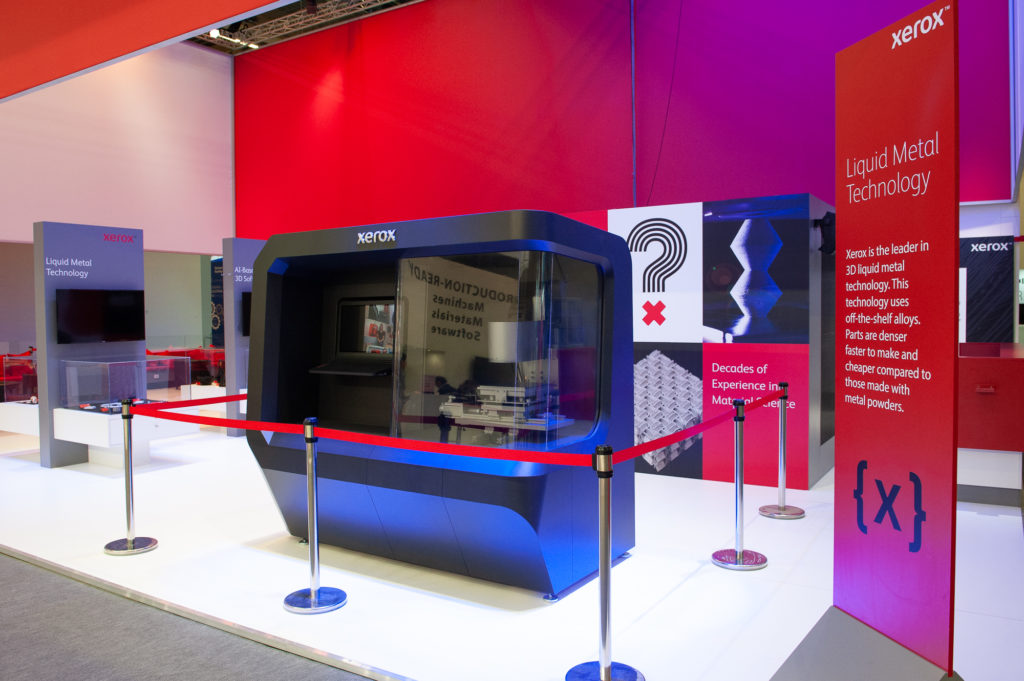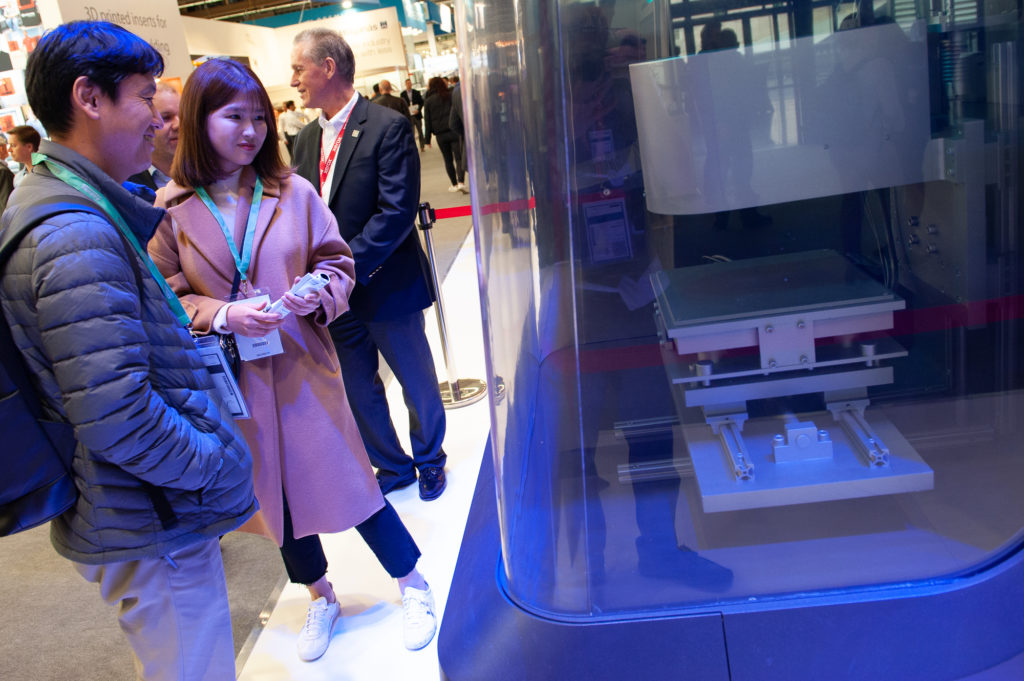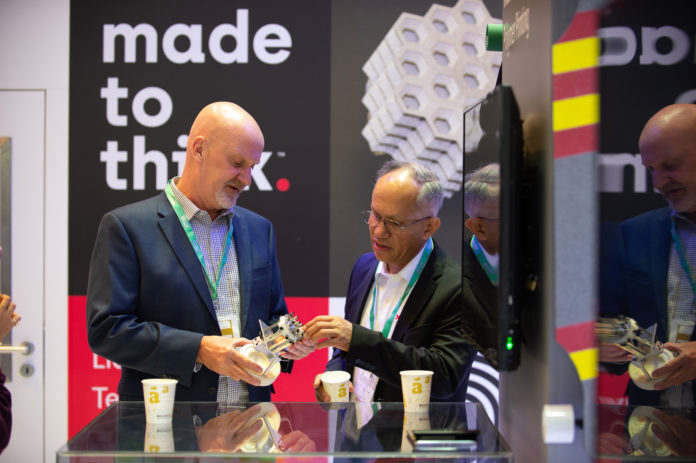October 2018: a statement of Xerox CEO John Visentin informed the public of the company’s plans to “participate” in the additive manufacturing industry. A statement that was an alarm bell for long-established AM companies that were all curious to discover what the manufacturer of 2D Printers and photocopiers could bring to the 3D printing industry. Not to mentioned that, companies with Xerox’ profile that took advantage of their 2D Printing expertise have been able to drastically stand out from the crowd in this niche market.
Even though the company’s activities in the AM market have been quite silent during these two years, the reality is, the American manufacturer’s true footprints in the additive manufacturing industry go back to about 20 years ago.
“Today our inkjet printheads are used by leading 3D print equipment manufacturers in their systems. We’ve also been testing our 3D software with the Department of Defense and NASA for the past three years. What initially brought us to the market is, we had the capabilities in equipment design, software, and materials that could be applied to 3D. For instance, Xerox is very adept in depositing material – whether it be ink or toner – precisely, reliably, and at scale, and we are applying this knowledge to our 3D technologies” comments Kevin Lewis, our guest in this Opinion of the Week series.
We have to give Lewis credit. Indeed, very few manufacturers mention the provider of their machines printheads when they launch a new 3D printing system. However, the veracity of this assertion raised several questions: we had no idea they already had a footprint in AM twenty years ago, so what’s different now? And why? Questions that we will discuss with Kevin Lewis in this Opinion of the Week.
With a 28-year experience in the company, he has acquired extensive experience in several leading positions in the fields of engineering, business unit operations, product planning, competitive intelligence, and strategy. He is currently the business lead for 3D Printing at Xerox. He knows the company by heart now and is uniquely positioned to discuss this “new vision” regarding the AM market.
A new vision for taking part in the additive manufacturing market
Xerox’ new strategy has reached a decisive milestone when it acquired Vader Systems, a New York-based manufacturer of liquid metal jet 3D printers. The announcement was made during the Investor’s Day 2019 conference in New York. At that time, neither Xerox, nor Vader Systems provided further details on the acquisition or the long-term strategy behind this move.
Nevertheless, it was time for Xerox to make this strategic move as its brand had long been synonymous with photocopying. Moreover, the company needed to grow in order to regain a position at the forefront of technology companies.
To make tangible this intent to regain a strong position among technology companies, the company made a real splash at Formnext 2019. Its debut at the global AM gathering was hard to miss given the size of its booth and the large AM system that was placed in the centre.
The Industrial 3D Printing system is then based on the liquid metal technology whose innovation business model has been revamped. As Lewis explained: “this technology uses commercial, off-the-shelf alloys, which means parts are denser, faster to make, and cheaper compared to those made with metal powders. Also, unlike metal powders, the metals we use are the real alloys. These are the same off-the-shelf alloys used in traditional manufacturing, so manufacturers can design parts using materials they know. With liquid metal, we eliminate many of the post-processing steps associated with metal powders, such as depowdering, debinding, and sintering, which are timely and costly steps. Since our process does not use powdered metals, it’s much safer than those which do, so manufacturers do not need to make any significant facility changes.”

More than hardware, Xerox also provides software and material solutions. The business lead for 3D printing explained that the American company is used to combine various expertises in its print business. Once this approach is applied to AM, it gives them more strength than ever to supply their clients:
“The combination of these elements is where our strength in the 3D space derives from. When you take our 3D liquid metal technology, which uses off-the-shelf alloys, and combine it with our AI-based 3D software, which enables manufacturers to customize the most complex parts, manufacturers can design and fabricate parts that meet their structural and cost requirements on the first try. Our strength is in taking these individual elements and creating a fully integrated system. That has always been Xerox’s strength”, continues Xerox spokesperson.
Moving forward, Xerox’ view on the evolution of Artificial Intelligence in the AM industry
As Lewis mentioned the combination of their AI-based 3D software with 3D metal liquid technology, we couldn’t help but think that the company is part of the few companies that are actually leveraging and providing both technologies.
The question of AI & AM has been on the table since a few years now, but industries are slow to take action. This can be understandable: AM has been around for decades and the first real shifts in production workflows have been observed five or six years ago. The use of a new technology always raises several concerns but reality shows that in practice, “AM and AI are actually a winning combination”, as per the words of our guest.

Indeed, if AM allows the fabrication of complex geometries, the addition of an AI-driven software enables to automatically generate lightweight, performance-optimized, manufacturable designs with organic, non-intuitive shapes.
“Additionally, AM today is largely an open-loop process that needs to be closed with feedback control from humans to create quality parts. AI will be a huge enabler to build these types of control mechanisms into printers. We believe that the early adoption of AI into the AM design and production process will provide competitive advantage, and that AI is critical to harnessing the full potential of AM”, said the business lead for 3D Printing at Xerox.
Things are moving slowly but surely. Lewis observed a slow shift towards digitization and AI in traditional manufacturing industries. On the other hand, large-scale industrial productions increasingly leverage AM. Moving forward, Xerox envisions a manufacturing workforce demographics that will mainly comprise digital natives.
Concluding thoughts
Speaking of 3D Printing/AM in the growing market, Lewis believes that “we will begin to see a focus on what [he] calls the “infrastructure” of 3D printing.”
“There are some very good print technologies in the market that meet different customer needs. In order for 3D to take hold in true manufacturing, the industry will begin to focus on the nuts and bolts, like design for additive, better integration into manufacturing workflows, standards, and other areas beyond the print technology.
Lastly, the next decade is going to be an exciting time for the AM industry and Xerox is excited to be part of this latest technology revolution”, concludes Lewis.
One thing is for sure: Xerox has well prepared its “participation” in the AM industry. The manufacturer is bringing a combination of technologies whose value is undeniable for industries. As Lewis mentions in his concluding statement, the focus now has to be on areas that go beyond the print process. That’s exactly where they are laying emphasis on and we can’t wait to see to the use cases that will validate the power of their technologies.
Remember, you can post job opportunities in the AM Industry on 3D ADEPT Media or look for a job via our job board. Make sure to follow us on our social networks and subscribe to our weekly newsletter : Facebook, Twitter, LinkedIn & Instagram ! If you want to be featured in the next issue of our digital magazine or if you hear a story that needs to be heard, make sure to send it to contact@3dadept.com.






